Dioscorea is the name given to over 600 species of yams found throughout the globe. In Malawi we have several of these species to choose from to help diversify agricultural systems. Some of these species can yield tubers that are 20-50 kg in weight. They can be peeled and cooked similar to any potato. The yams make a wonderful addition to soups and stews, they can be boiled, fried, or baked, they can even be dried and ground into flour, and they are rich in nutrients and antioxidants. They can be harvested throughout the year, and if they are left in the ground they will just continue to get larger in size. (note: be careful where you plant them as we have seen them break water pipes and even crack the foundations of houses!)
Here are a series of pictures that we took from one of our yam harvests. This one had been growing in our courtyard garden for 3-4 years. When we dug it out, we found massive edible tubers which ended up weighing over 40 kgs. My wife and I, as well as the Never Ending Food staff and interns, ate from this one yam for almost a month.
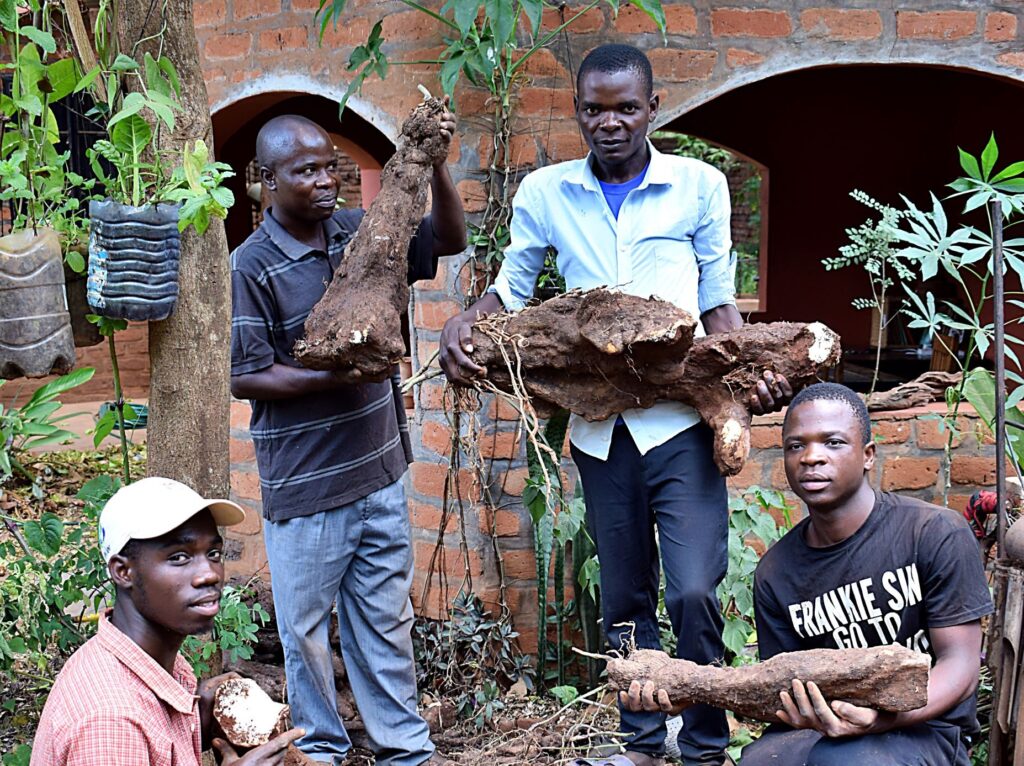
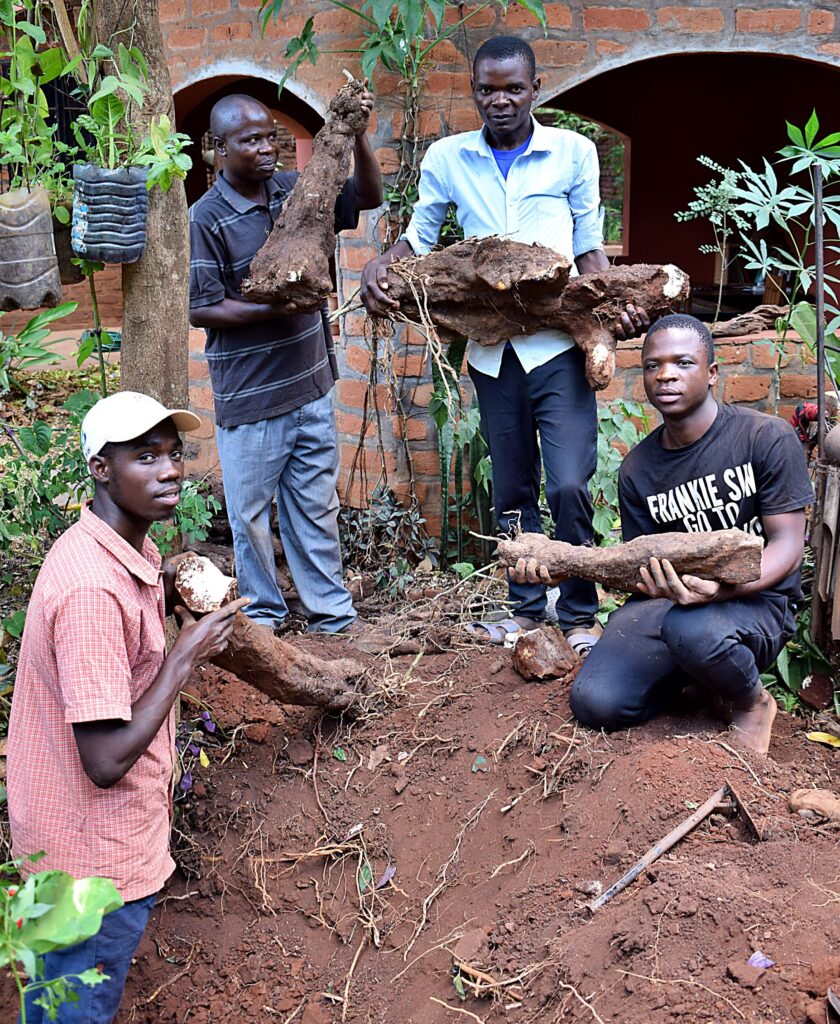
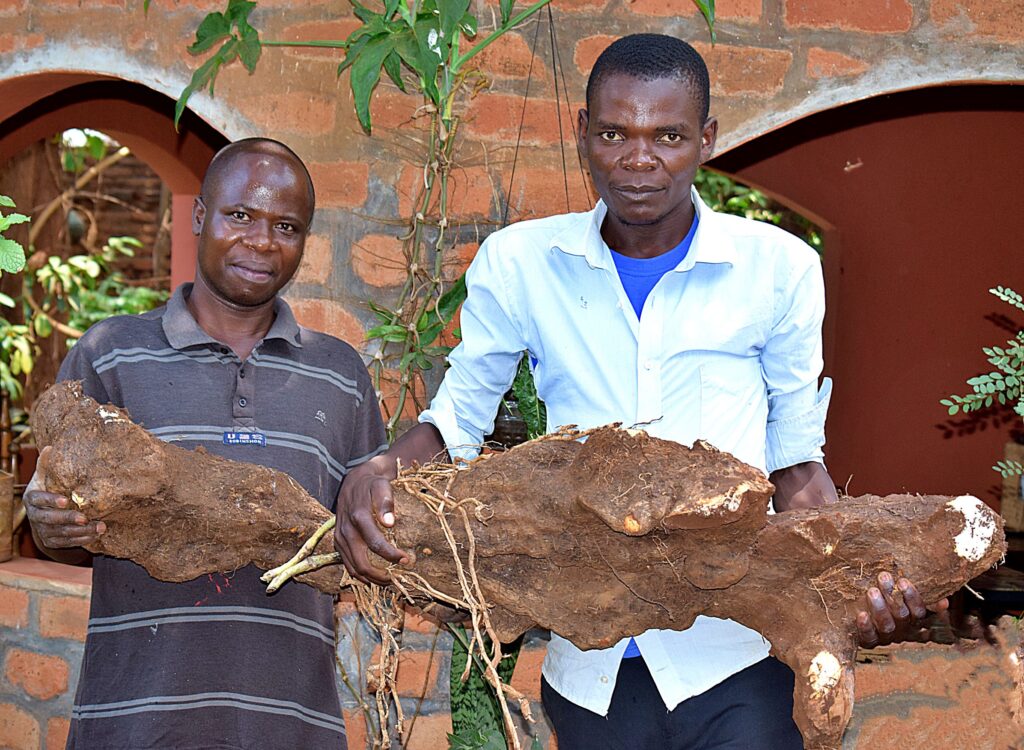
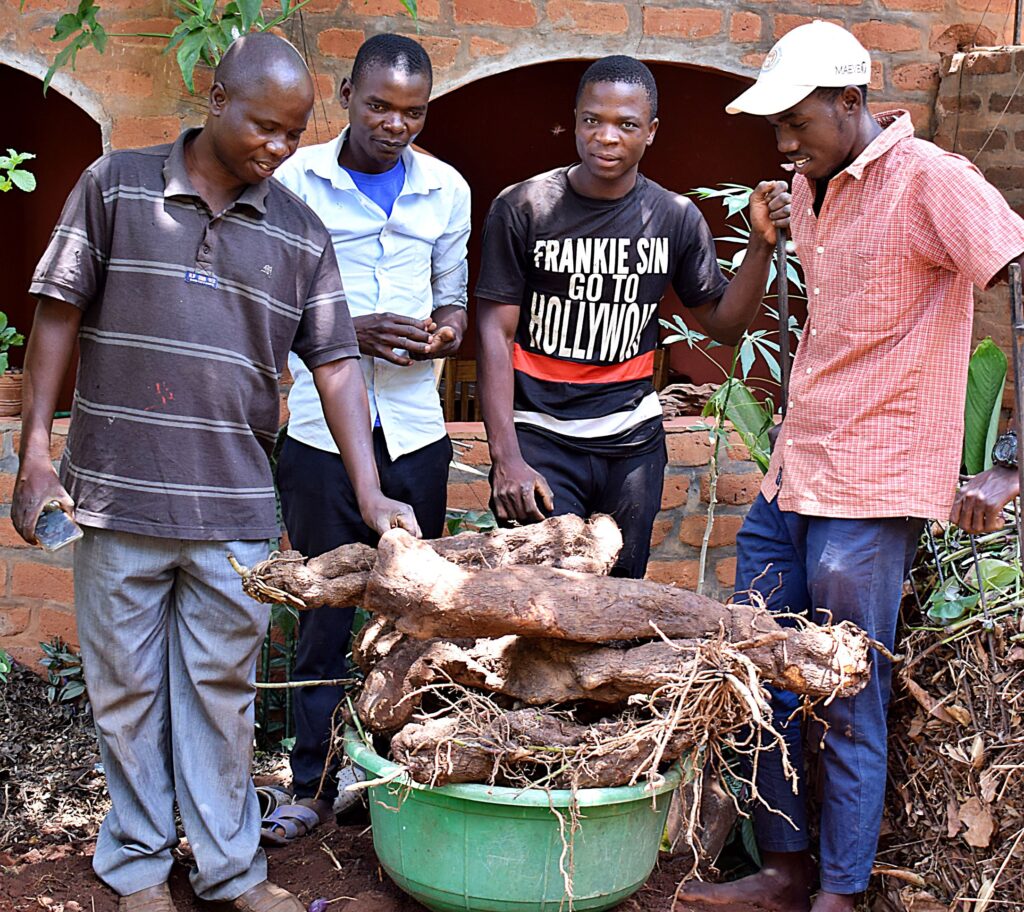
A hectare of land is 100 meters by 100 meters, or 10,000 square meters. Imagine making a 2 meter by 2 meter (four square meter) square in your field. This is plenty of space to plant a yam. If this were to be done on a hectare of land, it means that 2,500 yams could be planted. If each yam reached 20 kgs in weight, it would be equivalent to 50,000 kgs of food (or nearly 48,000 kgs greater than the current maize yield averages).
In 2005, the government of Malawi launched their ‘Farm Input Subsidy Programme’ (FISP). This led to millions of US dollars being invested to subsidize the cost of synthetic fertilizers, primarily to boost the yields of maize in the country. It worked. On average, Malawi went from an average of 1,300 kg/hectare of maize to 2,100 kg/hectare.
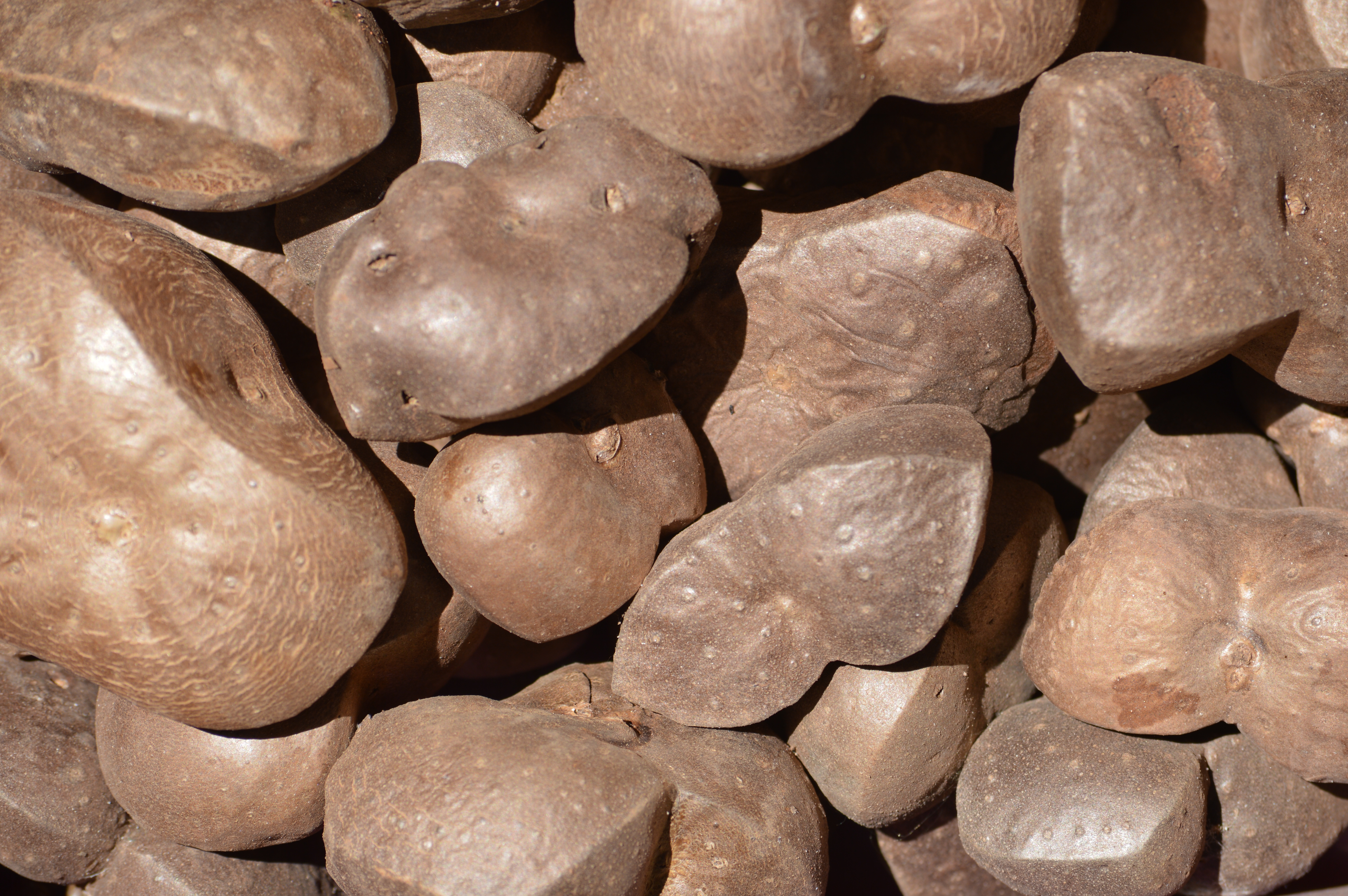
In addition, yams like to climb. There is even one variety (Dioscorea bulbifera or ‘Air Potato’) which produces its yams in the air right on its vine as it climbs vertically. This means, that yams can also be intercropped with trees, to act like a climber/supporter combination. This increases food production vertically, and many of these trees (e.g., mangoes, avocadoes, citrus, loquat, etc.) can also yield food. Other trees can be used as agroforestry species (e.g. leguminous ‘nitrogen-fixing’ trees), or for fuel, oil, fibre, medicines, and more.
Unfortunately, many people are forgetting about these incredible natural resources. For many of our visitors to Never Ending Food, it is their first time to see or even hear about such natural wonders. This needs to change. Nature offers us all the solutions we need to feeding the planet, diversifying diets, and ensuring that we have year-round food security…all we need to do is learn the lessons that nature is trying to teach us!
